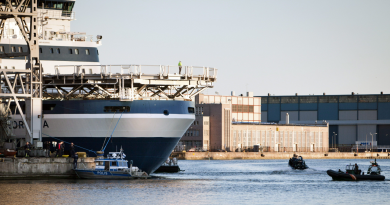Canadian museum gets $15 million for Inuit Art Centre

The Canadian government will contribute $15-million dollars towards the construction of an Inuit Art Centre at the Winnipeg Art Gallery (WAG) in the province of Manitoba.
“This unique centre will showcase Inuit art, language and culture, bringing the wonders of the North down south and giving visitors an opportunity to learn more about this majestic part of Canada,” said Melanie Joly, the minister of Canadian Heritage, in a statement on Tuesday.
The WAG has has the largest public collection of contemporary Inuit art in the world and includes 13,000 carvings, drawings, prints, textiles, and new media.
The new, four-storey, 40,000-square foot Inuit Art Centre will be built right next to the WAG.
“The Centre is a game-changing initiative that will see Inuit art and stories celebrated and shared with Canada and the world,” Stephen Borys, the WAG’s Director and CEO, on Tuesday. “The generous support of the federal government confirms the national importance of the Inuit Art Centre’s mission and the enduring power and beauty of Inuit art and culture in today’s society.”
The Inuit Art Centre has also received funding from the city of Winnipeg ($5 million) and the Manitoba government ($15 million.)
Importance of Inuit art in Canada
Inuit were actively encouraged to produce carvings and crafts by the federal government in the 1900s as a way to encourage economic self-sufficiency.
Once sold down South, these handiworks became the first direct contact most southern Canadians had with Inuit culture. In the 1950s, Canadian artist James Houston moved to the Arctic and began to teach Inuit printmaking and drawing, something that eventually took the art world by storm and made artists like Kenojuak Ashevak international stars.
Traditional Inuit art remains wildly popular in Canada, but works by contemporary artists are gaining increasing recognition for their depiction of modern life and social issues in the Arctic and issues like climate change.
Construction of the Inuit Art Centre is expected to be finished by 2020.
Write to Eilís Quinn at eilis.quinn(at)cbc.ca
Related stories from around the North:
Canada: Arctic artworks featured at Canadian auction, Eye on the Arctic
Finland: London gallery offers multimedia Sámi art, Yle News
Greenland: Canadian artist explores Greenland’s past, Eye on the Arctic
Russia: Karelian art on show in Russia, Yle News
Sweden: Swedish Sámi visual artist shaping climate changes, Radio Sweden
United States: Feature Interview – Alaskan artist Nicholas Galanin, Eye on the Arctic



